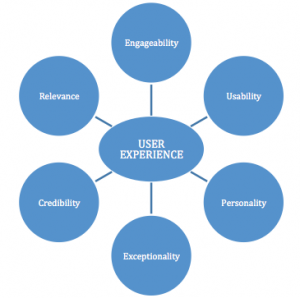In my experience working with digital agencies over the years, the central goal of my involvement was to help explode the perception among clients that they—the agencies—were excellent at digital projects, but unable to market brands in a full-service capacity. And clients have good reason to see things this way. Out of many good or great digital agencies, only a couple have consistently made the leap to full service in a credible way. The irony is that there is no secret. The barrier—even when pointed out—is simply too much for many digital agencies to overcome.
Digital agencies need to stop defining themselves by how they do what they do, and focus more on why they might be better at getting results. This sounds like a no brainer. After all, if clients get the results they are seeking, they couldn’t care less about how it gets done. But culturally, digital agencies often attract the type of people who are so infatuated with the technology that it blinds them to the central issue: brand building. They are like an 80s new wave musician who obsesses over his synthesizer’s cool way of producing sounds, and neglects to write timeless music.
At face value, an agency that commands the engagement power afforded by digital venues—and the growing trend in customers’ reliance on them—should, logically, trump traditional agencies in creating a more flattering reflection of customer values in the brands they service. Let’s look at the primary weapon a digital agency has in its arsenal: the user experience, or UX. In the model I have evolved over the past 10 years working with digital agencies, there are three central strategic pillars of the UX, each with two components—all illustrated in the diagram below:

On the left are Inward-directed considerations of the user (Relevance/Credibility). On the right are Outward-directed projections to the user (Usability/Personality). And on the Top/Bottom are forward-directed relationships with the user (Engageability/Exceptionality).
The Inward-directed considerations take into account values essential to the user’s trust that the experience is worth his/her while. RELEVANCE is the user’s assessment of how his/her time is respected and well spent. CREDIBILITY is the user’s assessment of the legitimacy of information, promises and transactions.
The Outward-directed projections to the user take into account how accessible the experience is both practically and emotionally. USABILITY is the user’s comfort and ease with navigation and content presentation. And PERSONALITY is the predominant feeling(s) the user takes away from the experience.
The Forward-directed relationships take into account the value of continued engagement with the experience on the part of the user. ENGAGEABILITY is the degree to which the user finds the experience compelling in the moment of engagement. And EXCEPTIONALITY is the degree to which the user differentiates and esteems the experience over the long term.
When viewed in this way, the majority of the UX—Relevance, Credibility, Personality and Exceptionality—are about the brand’s ability to create a flattering reflection of the user’s values. Where the technology shines—Usability and Engageability—is key to the experience, but not nearly as differentiating to the user, and therefore, not as germane to getting better results for the brand. Technology isn’t the star, the brand—in its capacity to reflect user values—is the star. This is the cultural barrier that most digital agencies cannot seem to get over. The tail keeps wagging the dog. Or to continue with my previous analogy: no matter how exceptional the equipment in the audiophile’s collection, the user doesn’t’ listen to the stereo system; the user listens to the music.
So in many ways, I feel that the terms Digital Agency and User Experience perpetuate the form-over-function barrier that digital agencies face in their pursuit of greater respect from clients as a full-service agency. Sure, UX has the advantage of evoking the customer in its name. But clients market brands, and are looking for agencies that can best connect brand values with customer values. To a client, UX speaks to how agencies get things done in digital venues. Brand Experience, or BX, speaks to why agencies can get better results: they can create a more flattering reflection for the customer to see when regarding their brands. BX is not just limited to websites and digital venues, but also to every single aspect of the marketing plan, so it can expand perceptions clients have about digital agencies.
Sure, technology is fascinating. Verbal wars are fought over which smart phone is cooler, or which operating system better, or which mobile app is the most innovative. But let’s not lose sight of the prize. For every 1,000 techies debating the sonic superiority of a Gibson Les Paul or Fender Stratocaster, one Eric Clapton is busy crafting sweet, indelible licks that keep us coming back for more.

ive been waiting for you to chime in on the online vs offline war for some time.
you didn’t disappoint.
the dual agency model is antiquated and not sustainable.
as budgets keep getting leaner, which way will the pendulum swing?